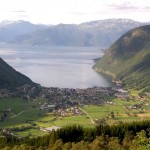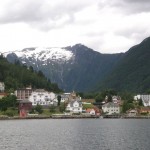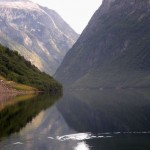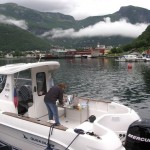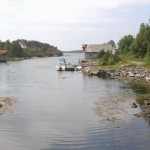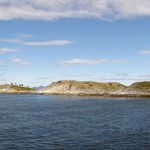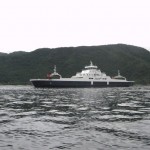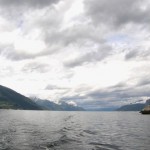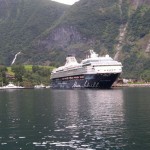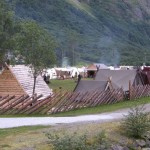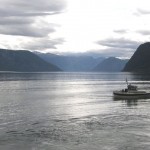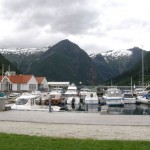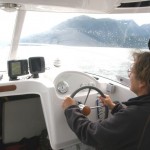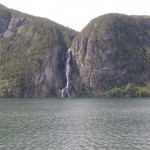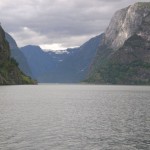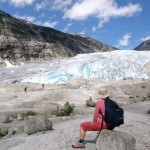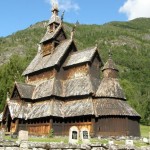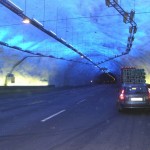Norge 2011
Fabulous fjord boating
It is not a river, not a canal, not a lake, and not even the sea…, it is long, it is narrow, it is deep, and it is surrounded by breathtaking nature… What is it? It is the longest and largest fjord in Norway: Sognefjorden. So boating on it cannot be called canal boating… That is why we decided to stylishly call this fabulous boating “fjord boating”.
For more than four years I diligently sought a way to make my “Norwegian boating dream” come true. My primary objective was the Telemark Canal. But where to hire a boat, when classic charter companies do not exist in Norway. Until I discovered a Sognefjorden “boat hire service” with small yachts with engines, which, lo and behold, could be ideal for our intention to boat from one end of the fjord to the other. So I began negotiating with the owner. Gjermund liked my plans and so nothing stood in the way of implementing my trip.
Sognefjorden, one of dozens of Norwegian fjords, is exceptional. It is the longest, cutting at a right angle from the sea into the mainland for over 200 km, and its depth of up to 1,300 metres is also amazing. It branches into many smaller side fjords, one of which is Nærøyfjord, the narrowest and wildest of all, which was put on the UNESCO World Heritage List. Sognefjorden is also relatively narrow, between one to five km, and is flanked by up to thousand-metre-high mountains. The everlasting snow on their peaks gives a “summer” voyage a rugged and wild touch. We enjoyed this beauty for our entire five-day voyage.
We hired the boat from Gjermund Flag in a small former fishing port, which is considerably distant from civilisation, where Sognefjorden meets the sea. The “Quicksilver 640” is a beautiful boat, which, however, cannot be called a houseboat as we know them from The Netherlands. But we are not namby-pambies, and what it lacked in amenities it made up for in speed. And because a 300 km voyage awaited us in the next 5 days, its cruising speed of over 30 km/hour was handy. As soon as we set out on our voyage she showed her quality. Although a “necklace” of small rocky islets separates the fjord from the open North Sea, that did not stop the ocean waves from really tossing us about. However, we were soon in the calmer leeward waters inside the fjord.
From there onward it was smooth sailing for us and we were not hampered by either the numerous large ferries providing automobile transport across the fjord instead of bridges or the huge cruise ships taking tourists “far inland”. Steep rocky shores of the fjord with ubiquitous waterfalls alternate with small towns, which were built in suitable places on the shores of the fjord: Høyanger, Balestrand, Sogndal, Gudvangen, and Flåm, and many other smaller villages and hamlets, often only accessible by water. Big cherry and apples orchards can be found in this protected basin with a warm microclimate, which made us think that a May voyage would have been even more impressive.
The destination of our voyage, Nærøyfjord, is truly a pearl among fjords. Thousand-metre-high mountains with steep rocky shores and a width of a few dozen metres to several hundred makes boating intensely romantic. You allow the boat to slowly sail along so that excessive engine noise does not disturb the sublime silence between the cliffs. The town of Gudvangen lies at the end of the fjord, which was chosen by the “European community of modern-day Vikings” for their summer camp. They live a genuine Viking’s life for several weeks of the year and it is possible to constantly see Viking ships sailing on the water. The presence of giant cruise ships at the end of another fjord, Aurlandsfjord, in the port of the town of Flåm, is testimony to the fact that those who come here on luxury ocean liners can and do enjoy the beauty of Norwegian fjords.
Five days of boating went by as quickly as water falling down a Norwegian waterfall, but our experiences will remain with us for a lifetime.
It should be noted that boating on Sognefjorden was not our only objective in Norway. We roamed through the beautiful Norway countryside for about ten days. It is also worth mentioning our tour of the Telemark Canal, Jostedalsbreen (Jostedal Glacier), an old wooden stavkirke (stave church) in Borglund, and the experience of driving through the longest road tunnel in the world – the 26 km Lærdal-Aurland tunnel.
July 2011
Charter: www.skivenes.no
